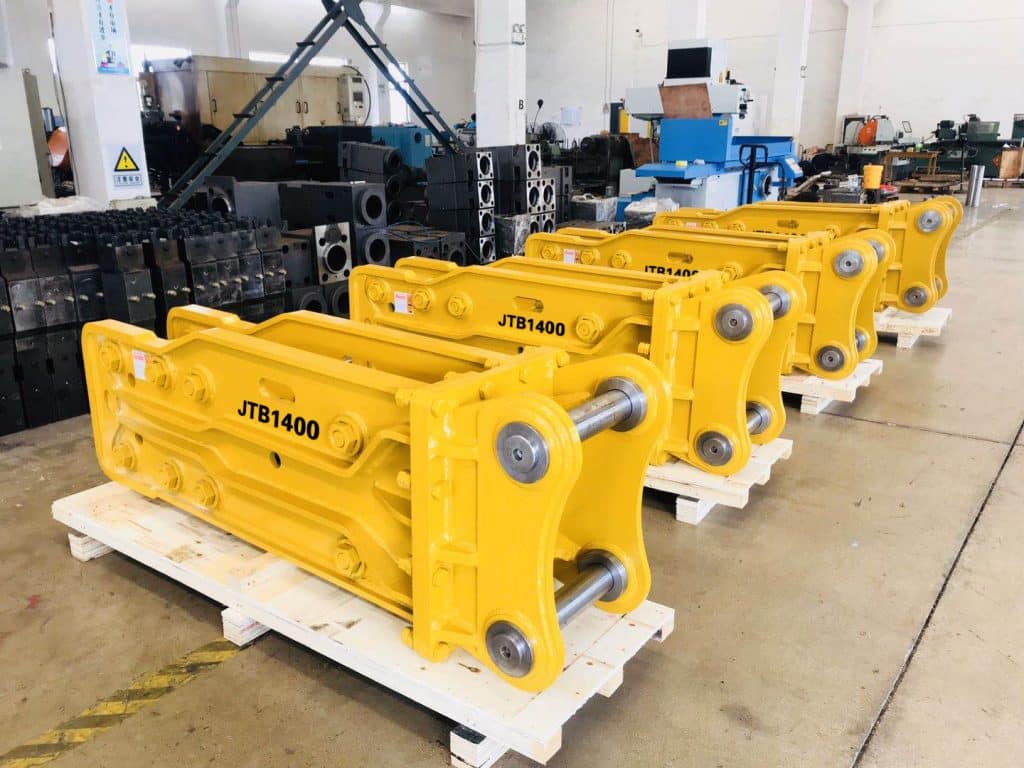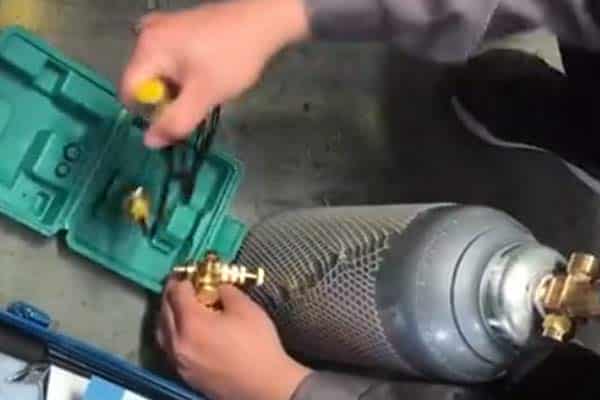For excavator drivers who frequently use hydraulic breakers, charging nitrogen is a routine. But many excavator operators don’t know how much nitrogen should be added, so today we will discuss how much nitrogen should be added and how to add it.
Why do we charge the hydraulic breaker with nitrogen?
When it comes to the role of nitrogen, we have to mention an important component – the accumulator. The accumulator is filled with nitrogen, which can store the remaining energy of the hydraulic breaker in the previous blow and the energy of the piston recoil, and release the energy at the same time during the second blow to increase the striking power. In short, the effect of nitrogen is to increase the strike energy. Therefore, the amount of nitrogen determines the performance of the hydraulic breaker.

How To Select Hydraulic Breaker/Hammer For Your Program?
Posted on 2021-08-03
Nowadays, The use of excavator hammer breakers is more and more widespread. We often see hammers at many job sites, It plays a vital role in urban and rural construction so making…
Read More: Excavator Attachments Select Guide
- Hydraulic Breaker/Hammer Select Guide
- Hydraulic Hammer Breaker and Chisel Tools Guide
- Hydraulic Grapple Select Guide
- Earth Auger Select Guide
How much nitrogen should be added?
How much nitrogen should be added is a concern of many excavator operators. The more nitrogen is added, the greater the pressure in the accumulator. And accumulators’ optimum working pressure varies according to the hydraulic breaker model and the external conditions. Usually, the pressure should be around 1.4-1.6 MPa (approximately equal to 14-16 kg).
What will happen if there is a shortage of nitrogen?
If there is not enough nitrogen, the pressure in the accumulator will decrease and the striking will be less powerful. If the diaphragm is damaged, it needs to be disassembled as a whole during maintenance, which is complicated and expensive. Therefore, when charging nitrogen, we need to charge it to the specified pressure.
What will happen if the nitrogen is overcharged?
Insufficient nitrogen will affect the performance of the hydraulic breaker. Is it better to add more nitrogen?
The answer is negative. If too much nitrogen is added, the pressure in the accumulator is too high, and the hydraulic oil pressure can’t push the cylinder rod upward to compress nitrogen, the accumulator will not be able to store energy, and the hydraulic breaker will not work.
How to charge nitrogen?
Nitrogen charging instructions:
- After connecting the pressure gauge to the three-way valve, turn the handle of the three-way valve counterclockwise.
- Connect the hose to the nitrogen cylinder.
- After removing the screw plug from the breaker, install the three-way valve on the charging valve of the cylinder. (Make sure the O-ring is installed on the 3-way valve)
- Connect the other end of the hose to the three-way valve.
- Turn the valve handle on the nitrogen cylinder counterclockwise to release nitrogen gas (N2), then slowly turn the three-way valve handle clockwise to the specified set pressure.
- Turn the three-way valve handle counterclockwise to close, then turn the valve handle on the nitrogen bottle clockwise to close.
- After the hose is removed from the three-way valve, the three-way valve should be closed
- Turn the three-way valve handle clockwise to recheck the cylinder pressure.
- Remove the hose from the 3-way valve.
- Install the three-way valve tightly on the charge valve.
- When the three-way valve handle is turned clockwise, the pressure value in the cylinder will be show on the pressure gauge.
- If the nitrogen pressure is low, repeat steps 1 to 8 until the pressure rises to the specified pressure.
- If the nitrogen pressure is too high, turn the regulator on the three-way valve counterclockwise slowly, so the nitrogen is discharged from the cylinder; when the pressure gauge shows the proper pressure value, the regulator should be closed clockwise. If the pressure is too high, the hydraulic breaker will not work. Make sure that the pressure is within the specified value and that O-ring is installed on the 3-way valve
- Turn left | turn right
Note: The new and repaired hydraulic breaker must b charged with nitrogen before starting work, and its pressure should be 2.5, ±0.5MPa. If the hydraulic breaker is to be shut down for a long time, the nitrogen should be evacuated, and the oil inlet and outlet ports should be sealed. It should not be stored in high temperatures and environments below -20 degrees.
Therefore, no matter whether there is less or more nitrogen, it cannot work normally. When charging nitrogen, we must use a pressure gauge to measure the pressure, control the pressure of the accumulator within the normal range, and make an adjustment according to the actual working conditions, which can not only protect the components but also work efficiency.
If you have any questions about hydraulic breakers or other excavator attachments, feel free to contact us at any time.
JIANGTU Excavator Break adopts special carbon steel material and heat treatment processes to ensure that the wear of the piston hitting surface is minimized and the service life of the piston is maximized.
Piston production adopts precise tolerance control to ensure that the piston and cylinder can be replaced with a single product, reducing maintenance costs.
The shell of the breaker has put forward higher and higher requirements for its sealing system. The NOK brand oil seals ensure our hydraulic breaker has low (zero) leakage, low friction and wear, and long service life.

